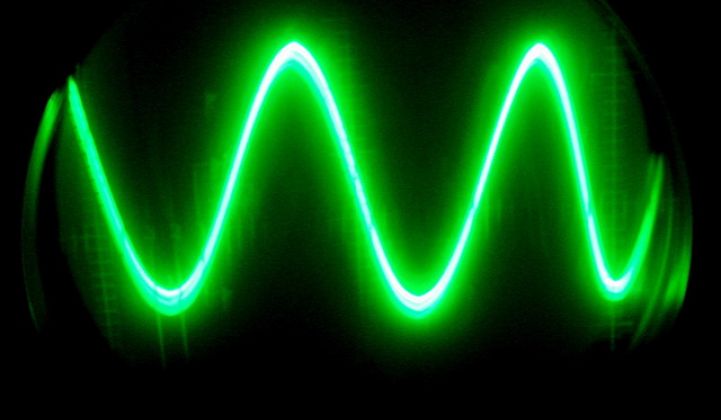The U.S. and European solar photovoltaic module market is dominated by Chinese solar panels from vendors such as Yingli, Suntech, and Trina Solar. Tariffs imposed and trade issues aside, China has won this market with low-cost, high-quality, crystalline silicon solar panels. Almost 50 percent of the solar modules deployed in the U.S. in 2011 were manufactured in China, according to GTM Research.
But when it comes to the other vital piece of solar system hardware, the inverter, "market share of Chinese inverter companies in the U.S. is virtually zero," according to GTM Research solar analyst MJ Shiao. (That excludes made-in-China inverters by Advanced Energy, Satcon, et al.) The inverter market is dominated by Germany's SMA and other European and American vendors such as Fronius, Advanced Energy, Kaco, and Satcon.
Every grid-tied solar system requires an inverter to transform electricity from DC to AC. But Chinese inverters haven't come to dominate in the U.S. or EU for a number of reasons:
- Since the PV inverter represents only about 7 percent of the total cost of the solar system, a cheaper inverter doesn't have that strong an impact on system price. There's a relatively smaller cost advantage to be gained by moving to a cheaper, less reputable Chinese inverter.
- Just as many installers didn't use Chinese modules because of quality, bankability, and reliability concerns, installers are reluctant to go with Chinese inverters. As MJ Shiao comments, "The issue is exacerbated with inverters for two reasons: 1) you can't discount the quality perception hurdle as easily because there's not as much cost to discount, and 2) inverters are the single largest culprit of system failure in most PV systems, which means there's a much higher reliability standard by developers and third-party engineers."
- European manufacturers had a tough time entering the U.S. market because of the difficulty getting UL1741 certification (it's taken some suppliers up to two years to get UL certification). Many Chinese manufacturers have been going through the process, but it's going to take a while for the bulk of them to obtain certification, according to Shiao.
One Chinese company, Chint, aims to be the first Chinese inverter firm to surmount these barriers. The Chint executives I spoke with last week called Chint "the General Electric of China" and suggested that if you haven't yet heard of the $4 billion annual revenue firm, you soon will.
Chint has its headquarters and manufacturing in Shanghai, and according to Ed Heacox, GM of North America, Sales and Marketing for Chint Power Systems, 60 percent of its supply chain is located within an hour of its headquarters. Heacox called the inverter manufacturer "vertically integrated," though it also sources critical components such as IGBTs and capacitors from the globe's top ten suppliers.
Heacox told GTM that Chint "has already made a dent" in the EU and Asia with 400 megawatts shipped cumulatively over the last few years. Heacox and team see the inverter market moving in just the opposite direction of commoditization, where levelized cost of energy (LCOE), features, and quality are more important than just dollars-per-watt.
Heacox and team noted that the inverter architecture issue is still contentious with central versus string versus microinverter and optimizer schemes yet to be crowned a dominant solution.
"Cost is important, but what's the right product for the installation?" asked Heacox. Using disruptive power electronics, "We're going to make 3-phase string [architecture] irresistible," said Heacox, adding, "Chint will service a whole range of applications with one product at a lower cost than central inverters." He said that central inverters will lose the battle in small and medium commercial solar installations using Chint's 20-kilowatt building block with dual and independent Maximum Power Point Tracking (MPPT) power stages.
Shiao responds, "Chint isn't the first or only to push the multiple MPPT or 3-phase string solution. It's a solution that's popular in Germany now and is slowly being introduced to the States by inverter suppliers. Power-One and SMA have both introduced similar concepts into the U.S."
Jurgen Krehnke, president and general manager of SMA America, had this to say: "In a PV system, the inverter is where you find the greatest degree of technology differentiation. Additionally, a reliable inverter is the key to a system's overall production and therefore a component that must be chosen very carefully based on real-world performance, not simply price. These factors have allowed European and American incumbent to maintain market share. While SMA expects to see more Chinese entrants, we believe that quality and reliability will remain the deciding factors among professionals."
There's little doubt that Chinese inverters are coming from Chint and others like Chint. There has already been an increase in adoption in Europe. Shiao sums it up thusly: "Many of these Chinese firms are well capitalized and have experience in industrial automation and other large electrical equipment manufacturing [like Chint]. And recently, their performance has been rated very close to those of leading European manufacturers in third-party laboratory testing."



